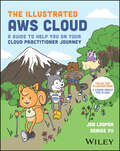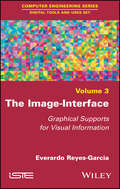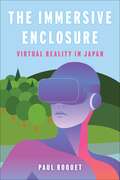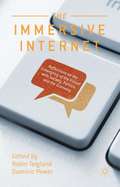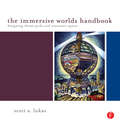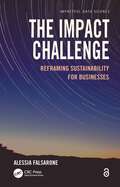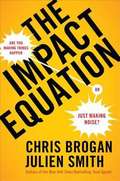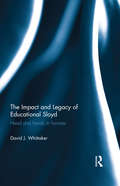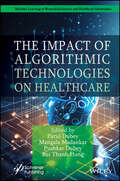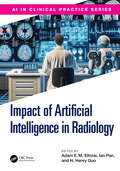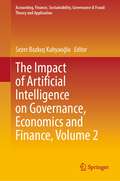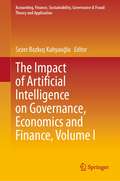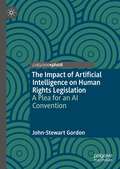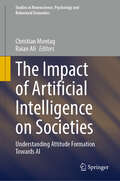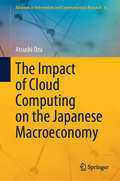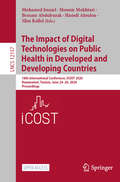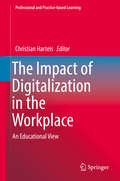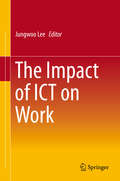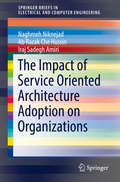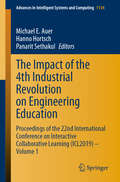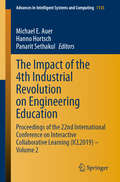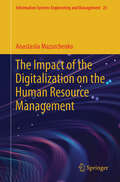- Table View
- List View
The Illustrated AWS Cloud: A Guide to Help You on Your Cloud Practitioner Journey
by Jen Looper Denise YuAn intuitive, fully illustrated guide to Amazon Web Services for the visually oriented In The Illustrated AWS Cloud: A Guide to Help You On Your Cloud Practitioner Journey, a team of veteran tech educators delivers a visual and entertaining guide to Amazon Web Services cloud concepts. The authors focus on the job role and responsibilities of an AWS cloud practitioner, guiding readers through choosing the best AWS services for specific use cases. In addition to general cloud concepts, security and compliance, technology, and billing and pricing topics, you’ll find: High-resolution, black-and-white illustrations clearly explaining critical technical concepts Comprehensive coverage of working with an AWS account and understanding the AWS environment Complete chapters on each of the main categories of AWS services, including Compute, Storage, Database, and NetworkingThe authors also provide bonus content on their companion website at https://illustratedaws.cloud/. Perfect for anyone looking for an easy-to-follow and visual introduction to the Amazon Web Services cloud, including those considering a career as a cloud administrator or technical support person, The Illustrated AWS Cloud is an effective resource for business, finance, sales, and marketing professionals who support and collaborate with AWS tech professionals.
The Image-Interface: Graphical Supports for Visual Information
by Everardo Reyes-GarciaDigital practices are shaped by graphical representations that appear on the computer screen, which is the principal surface for designing, visualizing, and interacting with digital information. Before any digital image or graphical interface is rendered on the screen there is a series of layers that affect its visual properties. To discover such processes it is necessary to investigate software applications, graphical user interfaces, programming languages and code, algorithms, data structures, and data types in their relationship with graphical outcomes and design possibilities. This book studies interfaces as images and images as interfaces. It offers a comprehensible framework to study graphical representations of visual information. It explores the relationship between visual information and its graphical supports, taking into account contributions from fields of visual computing. Graphical supports are considered as material but also as formal aspects underlying the representation of digital images on the digital screen.
The Immersive Enclosure: Virtual Reality in Japan
by Paul RoquetAlthough virtual reality promises to immerse a person in another world, its true power lies in its ability to sever a person’s spatial situatedness in this one. This is especially clear in Japan, where the VR headset has been embraced as a way to block off existing social environments and reroute perception into more malleable virtual platforms. Is immersion just another name for enclosure?In this groundbreaking analysis of virtual reality, Paul Roquet uncovers how the technology is reshaping the politics of labor, gender, home, and nation. He examines how VR in Japan diverged from American militarism and techno-utopian visions and became a tool for renegotiating personal space. Individuals turned to the VR headset to immerse themselves in three-dimensional worlds drawn from manga, video games, and genre literature. The Japanese government promised VR-operated robots would enable a new era of remote work, targeting those who could not otherwise leave home. Middle-aged men and corporate brands used VR to reimagine themselves through the virtual bodies of anime-styled teenage girls. At a time when digital platforms continue to encroach on everyday life, The Immersive Enclosure takes a critical look at these attempts to jettison existing social realities and offers a bold new approach for understanding the media environments to come.
The Immersive Internet
by Robin Teigland Dominic PowerCollecting short thought pieces by some of the leading thinkers on the emerging 'Immersive Internet', Power and Teigland's book questions what a more immersive and intimate internet - based on social media, augmented reality, virtual worlds, online games, 3D internet and beyond - might mean for society and for each of us.
The Immersive Worlds Handbook: Designing Theme Parks and Consumer Spaces
by Scott LukasScott Lukas, famed industry expert on designing themed spaces, brings you a book that focuses on the imaginative world of themed, immersive and consumer spaces. Whether or not you are involved in designing a theme park, cultural museum, shop, or other entertainment space, you will benefit from the insider tips, experiences, and techniques highlighted in this practical guide. Make your themed spaces come to life and become true, immersive worlds. The book features informative sidebars addressing possible design issues and current trends; case studies and interviews with real-world designers, and further reading suggestions. The book also includes a companion website, as well as exercises that accompany each chapter, lavish photos, illustrations, and tables.
The Impact Challenge: Reframing Sustainability for Businesses (Impactful Data Science)
by Alessia FalsaroneThis book explores the role of businesses in delivering positive societal and financial outcomes as they seek to bridge the gap between short-term organizational behaviors and long-range sustainability commitments. By addressing the inevitable data challenges associated with the strategic integration of a sustainability mindset, it enables faster adoption of social, environmental and governance metrics that generate lasting enterprise value. Inspired by the experience of practitioners that have successfully influenced the learning behaviors of complex organizations, this book helps readers drive systemic innovations as they leverage sustainability initiatives in a programmatic and intentional manner. Features: Defines a toolkit to generate sustainable business value by focusing on the organizational design underpinning sustainability-oriented initiatives. Provides a multidisciplinary lens on shaping the impact dialogue through applied frameworks. Discusses the need to analytically identify an organizational learning curve before developing impact targets and framing sustainability commitments around them. Combines theory and practice in a practical style by presenting a variety of real-life applications at a global level.
The Impact Equation: Are You Making Things Happen or Just Making Noise?
by Chris Brogan Julien SmithChris Brogan and Julien Smith, authors of Trust Agents, are back with The Impact Equation to show you how to make social media pay. What can the IMPACT EQUATION do for you? IMPACT = C × (R+E+A+T+E) Contrast: Does your idea stand out? Reach: How many people do you connect to? Exposure: How often does your audience hear from you? Articulation: Is your idea clear enough? Trust: Do people believe you? Echo: Does your idea connect to your audience? When Chris Brogan and Julien Smith wrote their bestseller Trust Agents, being interesting on the Web was enough to build an audience. Now everybody has a platform. But most of them are just making noise. In The Impact Equation, Brogan and Smith show that to make people truly care about what you have to say, you need more than just a good idea, trust among your audience, or a certain number of followers. You need a potent mix of all of the above - and more. As traditional channels for marketing and selling disappear and more people interact mainly online, the very nature of attention is changing. Use the Impact Equation to figure out what you're doing right and wrong. Apply it to a blog, a tweet, a video, or a mainstream advertising campaign. Use it to explain why a feature in a national newspaper that reaches millions might have less impact than a blog post that reaches a thousand passionate subscribers. The Impact Equation will give you the tools to guarantee your message will be heard. 'Their advice on the importance of being able to write to make a splash online is solid. . . when it comes to building a brand online Brogan and Smith have been there and done that' -The Financial TimesChris Brogan and Julien Smith are consultants and speakers who have worked with Fortune 500 companies, including PepsiCo, General Motors, American Express, and Microsoft. They have been involved in online communities and blogging for more than fifteen years. Their first book, Trust Agents, was a New York Times bestseller.
The Impact and Legacy of Educational Sloyd: Head and hands in harness
by David J. WhittakerOriginating in Finland in eighteen-sixty-five, Educational Sloyd used handicrafts practised in schools to promote educational completeness through the interdependence of the mind and body. These radical ideas spread throughout Europe and America and had a significant impact on the early development of manual training, manual arts, industrial education and technical education. Today it is generally acknowledged that Educational Sloyd laid the foundations of modern technological education. This book traces the development of Sloyd from its conception by Uno Cygnaeus and the first Sloyd school founded by Otto Salomon, to its enthusiastic take up in Scandinavia and beyond. It examines the debates and controversy which surround the Sloyd system, and considers the transition from ‘hands-on’ craft work to concepts of technology education. Finally, the investigation reveals the lasting legacy of the ideas and practice of Sloyd education, and how it continues to influence technological education. Included in the book: - the foundations of Educational Sloyd - debates, controversy and rival factions - key case studies in Finland and Iceland - the lasting legacy of Sloyd education. This fascinating and comprehensive historical exploration will be of interest to scholars and researchers in the areas of technology education, comparative education and the history of education.
The Impact of Algorithmic Technologies on Healthcare (Machine Learning in Biomedical Science and Healthcare Informatics)
by Bui Thanh Hung Parul Dubey Mangala Madankar Pushkar DubeyThe book explores the fundamental principles and transformative advancements in cutting-edge algorithmic technologies, detailing their application and impact on revolutionizing healthcare. This book provides an in-depth account of how technologies such as artificial intelligence (AI), machine learning (ML), and the Internet of Things (IoT) are reshaping healthcare, transitioning from traditional diagnostic and treatment approaches to data-driven solutions that improve predictive accuracy and patient outcomes. The text also addresses the challenges and considerations associated with adopting these technologies, including ethical implications, data security concerns, and the need for human-centered approaches in algorithmic medicine. After introducing digital twin technology and its potential to enhance healthcare delivery, the book examines the broader effects of digital technology on the healthcare system. Subsequent chapters explore topics such as innovations in medical imaging, predictive analytics for improved patient outcomes, and deep learning algorithms for brain tumor detection. Other topics include generative adversarial networks (GANs), convolutional neural networks (CNNs), smart wearables for remote patient monitoring, effective IoT solutions, telemedicine advancements, and blockchain security for healthcare systems. The integration of biometric systems driven by AI, securing cyber-physical systems in healthcare, and digitizing wellness through electronic health records (EHRs) and electronic medical records (EMRs) are also discussed. The book concludes with an extensive case study comparing the impacts of various healthcare applications, offering insights and encouraging further research and innovation in this dynamic field. Audience This book is suitable for academicians and professionals in health informatics, bioinformatics, biomedical science and engineering, artificial intelligence, as well as clinicians, IT specialists, and policymakers in healthcare.
The Impact of Artificial Intelligence in Radiology (AI in Clinical Practice)
by Adam E. M. Eltorai, Ian Pan, and H. Henry GuoImplementation of artificial intelligence (AI) in radiology is an important topic of discussion. Advances in AI—which encompass machine learning, artificial neural networks, and deep learning—are increasingly being applied to diagnostic imaging. While some posit radiologists are irreplaceable, certain AI proponents have proposed to "stop training radiologists now." By compiling perspectives from experts from various backgrounds, this book explores the current state of AI efforts in radiology along with the clinical, financial, technological, and societal perspectives on the role and expected impact of AI in radiology.
The Impact of Artificial Intelligence on Governance, Economics and Finance, Volume 2 (Accounting, Finance, Sustainability, Governance & Fraud: Theory and Application)
by Sezer Bozkuş KahyaoğluThis book continues the discussion of the effects of artificial intelligence in terms of economics and finance. In particular, the book focuses on the effects of the change in the structure of financial markets, institutions and central banks, along with digitalization analyzed based on fintech ecosystems. In addition to finance sectors, other sectors, such as health, logistics, and industry 4.0, all of which are undergoing an artificial intelligence induced rapid transformation, are addressed in this book.Readers will receive an understanding of an integrated approach towards the use of artificial intelligence across various industries and disciplines with a vision to address the strategic issues and priorities in the dynamic business environment in order to facilitate decision-making processes. Economists, board members of central banks, bankers, financial analysts, regulatory authorities, accounting and finance professionals, chief executive officers, chief audit officers and chief financial officers, chief financial officers, as well as business and management academic researchers, will benefit from reading this book.
The Impact of Artificial Intelligence on Governance, Economics and Finance, Volume I (Accounting, Finance, Sustainability, Governance & Fraud: Theory and Application)
by Sezer Bozkuş KahyaoğluThe book discusses the effects of artificial intelligence in terms of economics and finance. In particular, the book focuses on the effects of the change in the structure of financial markets, institutions and central banks, along with digitalization analyzed based on fintech ecosystems. In addition to finance sectors, other sectors, such as health, logistics, and industry 4.0, all of which are undergoing an artificial intelligence induced rapid transformation, are addressed in this book.Readers will receive an understanding of an integrated approach towards the use of artificial intelligence across various industries and disciplines with a vision to address the strategic issues and priorities in the dynamic business environment in order to facilitate decision-making processes. Economists, board members of central banks, bankers, financial analysts, regulatory authorities, accounting and finance professionals, chief executive officers, chief audit officers and chief financial officers, chief financial officers, as well as business and management academic researchers, will benefit from reading this book.
The Impact of Artificial Intelligence on Healthcare Industry: Volume 1: Non-Clinical Applications
by Sezer Bozkus Kahyaoglu Mustafa Berktas Abdulkadir Hiziroglu Ahmet Emin Erbaycu Orhan ErHealthcare and medical science are inherently dependent on technological advances and innovations for improved care. In recent times we have witnessed a new drive in implementing these advances and innovations through the use of Artificial Intelligence, in both clinical and non-clinical areas.The set of 2 volumes aims to make available the latest research and applications to all, and to present the current state of clinical and non-clinical applications in the health sector and areas open to development, as well as to provide recommendations to policymakers. This volume covers non-clinical applications. The chapters covered in this book have been written by professionals who are experts in the healthcare sector and have academic experience.
The Impact of Artificial Intelligence on Human Rights Legislation: A Plea for an AI Convention
by John-Stewart GordonThe unmatched technological achievements in artificial intelligence (AI), robotics, computer science, and related fields over the last few decades can be considered a success story. The technological sophistication has been so groundbreaking in various types of applications that many experts believe that we will see, at some point or another, the emergence of general AI (AGI) and, eventually, superintelligence. This book examines the impact of AI on human rights by focusing on potential risks and human rights legislation and proposes creating a Universal Convention for the Rights of AI Systems (AI Convention).
The Impact of Artificial Intelligence on Societies: Understanding Attitude Formation Towards AI (Studies in Neuroscience, Psychology and Behavioral Economics)
by Christian Montag Raian AliThis book presents a recent framework proposed to understand how attitudes towards artificial intelligence are formed. It describes how the interplay between different variables, such as the modality of AI interaction, the user personality and culture, the type of AI applications (e.g. in the realm of education, medicine, transportation, among others), and the transparency and explainability of AI systems contributes to understand how user's acceptance or a negative attitude towards AI develops. Gathering chapters from leading researchers with different backgrounds, this book offers a timely snapshot on factors that will be influencing the impact of artificial intelligence on societies. Chapter 12 is available open access under a Creative Commons Attribution 4.0 International License via link.springer.com.
The Impact of Cloud Computing on the Japanese Macroeconomy (Advances in Information and Communication Research #6)
by Atsushi OzuThis book focuses on the economic aspects of cloud computing, a critical ICT infrastructure in our digital age. The market for cloud computing is rapidly expanding and changing the nature of business in all industries. This book estimates and analyzes the impact of the diffusion of cloud computing on the Japanese macroeconomy, employing model-based simulations. Cloud computing services are being provided not only as simple data storage services but also as various value-added services. The market has shifted to an oligopoly, with a limited number of big-name global firms as the main players. This book quantitatively estimates the impact of this shift on Japan’s utility-based social welfare. The book also discusses public policy measures that can enhance free competition in a cloud computing market with oligopolistic characteristics. One aim of this book is to provide policymakers and researchers with fundamental data and an analytic approach that can be used to formulate public policy around cloud computing in terms of both regulation and market promotion.
The Impact of Digital Technologies on Public Health in Developed and Developing Countries: 18th International Conference, ICOST 2020, Hammamet, Tunisia, June 24–26, 2020, Proceedings (Lecture Notes in Computer Science #12157)
by Mounir Mokhtari Hamdi Aloulou Bessam Abdulrazak Slim Kallel Mohamed JmaielThis open access book constitutes the refereed proceedings of the 18th International Conference on String Processing and Information Retrieval, ICOST 2020, held in Hammamet, Tunisia, in June 2020.* The 17 full papers and 23 short papers presented in this volume were carefully reviewed and selected from 49 submissions. They cover topics such as: IoT and AI solutions for e-health; biomedical and health informatics; behavior and activity monitoring; behavior and activity monitoring; and wellbeing technology.*This conference was held virtually due to the COVID-19 pandemic.
The Impact of Digitalization in the Workplace: An Educational View (Professional and Practice-based Learning #21)
by Christian HarteisThis edited volume brings together researchers from various disciplines (i.e. education, psychology, sociology, economy, information technology, engineering) discussing elementary changes at workplaces occurring through digitalization, and reflecting on educational challenges for individuals, organizations, and society. The latest developments in information and communication technology seem to open new potential, and the crucial question arises which kind of work can be replaced by technology? The contributors to this volume are scholars who have been conducting research on the influence of technological change on work and individuals for a long time. The book addresses researchers as well as practitioners in the field of adult education and human resource development.
The Impact of ICT on Work
by Jungwoo LeeThis edited volume presents current perspectives on the innovative use of Information and Communication Technologies (ICT) as an integral part of the changing nature of work. The individual chapters address a number of key concepts such as telecommuting, alternative work arrangements, job crafting, gamification and new work skills, supplemented by a range of examples and supporting case studies. The Impact of ICT on Work offers a valuable resource for business practitioners and academics in the areas of information systems, as well as for human resources managers. The book will also be useful in advanced graduate classes dealing with the social and business impacts of information and communication technologies.
The Impact of Information on Modern Humans (Advances In Intelligent Systems And Computing #622)
by Elena G. PopkovaThis book features contributions from various spheres of socio-humanitarian sciences presented at the scientific and practical conference on “Humans as an Object of Study by Modern Science,” which took place in Nizhny Novgorod (Russian Federation) on November 23–24, 2017. The conference was organized by Kozma Minin Nizhny Novgorod State Pedagogical University and the non-profit organization “Institute of Scientific Communications.” Presenting the results of multidisciplinary studies as well as new approaches, the target audience of the book includes postgraduates, lecturers at higher educational establishments, and researchers studying socio-humanitarian sciences. The complex study of humans by representatives of various socio-humanitarian sciences (philosophy, pedagogics, jurisprudence, social sciences, and economics) allows a comprehensive concept of the field to be developed. Selecting humans as an object of research opens wide possibilities for studying various issues related to their activities, while considering humans within multiple sciences means that the methods of induction and deduction can be combined to achieve precise results. This book includes the results of leading scientific studies on the following key issues: establishment of an information economy under the influence of scientific and technical progress: new challenges and opportunities; information and communication technologies as a new vector of development of the modern world economy; specifics and experience of using new information and communication technologies in developed and developing countries; problems of implementing new information and communication technologies in the modern economy; and priorities of using new information and communication technologies in the modern economy.
The Impact of Pen and Touch Technology on Education
by Aaron Adler Tracy Hammond Stephanie Valentine Mark PaytonThis book presents perspectives for and by teachers, school and university administrators and educational researchers regarding the great impact pen and tablet technology can have on classrooms and education. presents three distinctly valuable threads of research: Emerging technologies and cutting-edge software invented by researchers and evaluated through real classroom deployments. First-hand perspectives of instructors and administrators who actively implement pen or tablet technologies in their classrooms. Up-and-coming systems that provide insight into the future of pen, touch, and sketch recognition technologies in the classrooms and the curriculums of tomorrow. The Impact of Pen and Touch Technology on Education is an essential read for educators who wish get to grips with ink-based computing and bring their teaching methods into the twenty-first century, as well as for researchers in the areas of education, human-computer interaction and intelligent systems for pedagogical advancement.
The Impact of Service Oriented Architecture Adoption on Organizations (SpringerBriefs in Electrical and Computer Engineering)
by Iraj Sadegh Amiri Naghmeh Niknejad Ab Razak HussinThis book describes Service-Oriented Architecture (SOA) and the significant factors which affect its adoption, such as governance, strategy, complexity, Return on Investment (ROI), business and IT alignment, culture and communication, costs, and security. The study on which this book is based, involved a quantitative analysis to investigate the influential factors for adopting SOA, paving the way to further research in the field.
The Impact of the 4th Industrial Revolution on Engineering Education: Proceedings of the 22nd International Conference on Interactive Collaborative Learning (ICL2019) – Volume 1 (Advances in Intelligent Systems and Computing #1134)
by Michael E. Auer Hanno Hortsch Panarit SethakulThis book gathers papers presented at the 22nd International Conference on Interactive Collaborative Learning (ICL2019), which was held in Bangkok, Thailand, from 25 to 27 September 2019. Covering various fields of interactive and collaborative learning, new learning models and applications, research in engineering pedagogy and project-based learning, the contributions focus on innovative ways in which higher education can respond to the real-world challenges related to the current transformation in the development of education. Since it was established, in 1998, the ICL conference has been devoted to new approaches in learning with a focus on collaborative learning. Today, it is a forum for sharing trends and research findings as well as presenting practical experiences in learning and engineering pedagogy. The book appeals to policymakers, academics, educators, researchers in pedagogy and learning theory, school teachers, and other professionals in the learning industry, and further and continuing education.
The Impact of the 4th Industrial Revolution on Engineering Education: Proceedings of the 22nd International Conference on Interactive Collaborative Learning (ICL2019) – Volume 2 (Advances in Intelligent Systems and Computing #1135)
by Michael E. Auer Hanno Hortsch Panarit SethakulThis book gathers papers presented at the 22nd International Conference on Interactive Collaborative Learning (ICL2019), which was held in Bangkok, Thailand, from 25 to 27 September 2019. Covering various fields of e-learning and distance learning, course and curriculum development, knowledge management and learning, real-world learning experiences, evaluation and outcomes assessment, computer-aided language learning, vocational education development and technical teacher training, the contributions focus on innovative ways in which higher education can respond to the real-world challenges related to the current transformation in the development of education. Since it was established, in 1998, the ICL conference has been devoted to new approaches in learning with a focus on collaborative learning. Today, it is a forum for sharing trends and research findings as well as presenting practical experiences in learning and engineering pedagogy. The book appeals to policymakers, academics, educators, researchers in pedagogy and learning theory, school teachers, and other professionals in the learning industry, and further and continuing education.
The Impact of the Digitalization on the Human Resource Management (Information Systems Engineering and Management #25)
by Anastasiia MazurchenkoThis book is strongly recommended for L&D professionals, HR managers, senior managers, and company owners who want to adapt their employees' training and skills development to the changing requirements of digitalization and technological progress, considering the specifics of the sector in which their organizations operate. It is unique in that it compares the views of employers and employees on digitalization and the development of digital competencies and skills and highlights the need to align them as part of implementing a long-term HR development strategy in an organization. The book features statistical hypothesis testing and links to the case studies, and it covers such areas as the historical development of digitalization, advantages, and disadvantages of technologies in HR management, the role of competency models, and organizational training in conditions of the Fourth and Fifths Industrial revolutions. The book also explores how employees' digital skill levels depend on age and career longevity and how much the level of digital readiness of organizations is affected by labor market trends and the impact of the COVID-19 pandemic. Taking into account practical recommendations and issues to consider, it emphasizes the need to update competency models, support a culture of continuous organizational training and knowledge sharing, and extend an organization's digital infrastructure to retain competitive human resources in the dynamic digital age. Readers will receive a comprehensive understanding of digitalization in human resource management and how it influences competency requirements for employees in different sectors in the international context.
